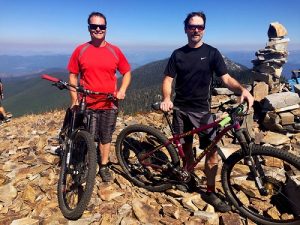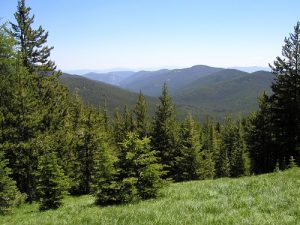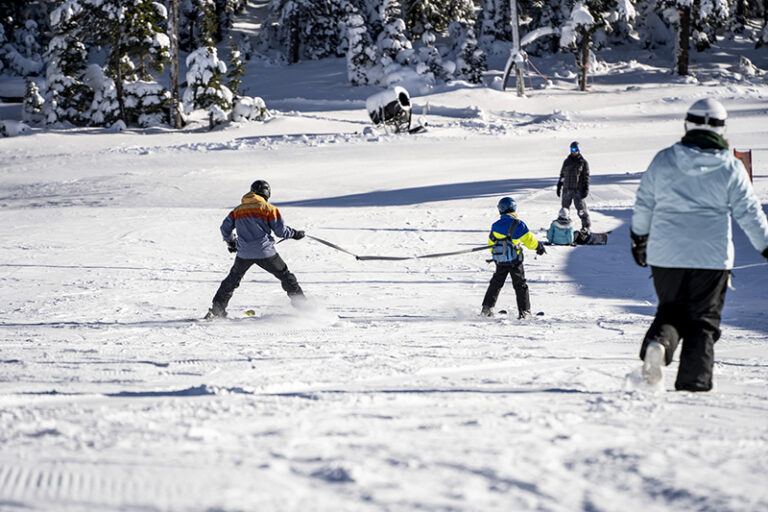The Colville National Forest is introducing a new revision to its Land and Resource Management Plan that will affect recreation uses, including hiking, mountain biking, and motorized access, as well as wildlife conservation policies for years to come.
The plan, which has been in place since 1988, was developed to direct management of the forest. Originally created under the National Forest Management Act of 1976, the plan has reached the end of its 15-year long use. During that time, many social and scientific changes have occurred that need to be taken into consideration. Revisions to the plan will guide the management of the Colville National Forest for the next decade, and are being made with the community in mind.

The Colville National Forest is incorporating feedback from the community and various groups into the process, including conservation organizations, mountain bikers, hikers, equestrians, timber and ranching interests, and off-road vehicle riders. The forest released a draft of the new plan and the environmental impact statement on February 19, and the public is encouraged to review and comment on the draft until Tuesday, July 5.
The revisions were first proposed back in 2011, and were given to the public and various tribes for comment. Changes were made as needed, and it was re-introduced earlier this year. Thus far, there have been a series of meetings, webinars, and other forms of outreach to engage the public and share the plan. You can view public comments on the website here.
Various alternative management approaches were also identified during this period. These alternative approaches differ over the development of the following 6 issues:
- Old Forest (Late Successional) Management & Timber Production
- Motorized Recreation Trails
- Access
- Recommended Wilderness Areas
- Wildlife Habitat
- Riparian & Aquatic Resource Management
Currently, Alternative P is identified as the Preferred Alternative by the Forest Service.

Conservation Northwest is providing comments asking the Forest Service to protect forest lands for future generations of people and wildlife, and encouraging others to do the same. According to Development and Communications Director Jeff Baierlein, Conservation Northwest is urging the agency to adopt Alternative P after, adds Baierlein, “adding explicit safeguards for large old trees, improving aquatic habitat protections and habitat connectivity, and recommending the following wild roadless areas on the Colville National Forest as wilderness: Profanity Peak, Bald Snow, Hoodoo, Abercrombie-Hooknose, Salmo-Priest Adjacent, Thirteenmile, and Quartzite.”
The group is also asking Senator Maria Cantwell to champion legislation to permanently protect these and other roadless areas through a combination of wilderness and other strong protections. “With few exceptions,” says Baierlein, “these designations would support existing motorized, mountain bike and non-motorized recreation opportunities as well as livestock grazing. Along with the Management Plan’s other provisions, these designations offer the right balance of conservation, recreation, forestry, and other uses.”
The Evergreen Mountain Bike Alliance (Eastern WA Chapter) also favors Alternative P, with some changes to limit the impact on existing mountain bike use. “We would like to see the Bald Snow recommended Wilderness area be included in the Special Interest Area to better manage the existing use there,” says Will Stone, President of the Chapter. “In order to keep the SIA under the 100k acre limit we’d recommend excluding some of the Graves Mt area from the SIA and instead designating that area as backcountry non motorized. The reasoning here is that the trail corridor south of the Snow Peak cabin connects the system to Edds Mountain and Barnaby Buttes, which are great riding options and maintain connectivity for bikes in this area of the Pacific Northwest National Scenic Trail. “
The group would also like to exclude the Abercrombie and Silver Creek trail from the recommended Wilderness in the Abercrombie Mt area, because, says Stone, it’s one of the few trails leading directly to a prominent peak (highest in Stevens County), with stellar views of the surrounding area.
“It’s our opinion that since these areas are suitable for recommended Wilderness that existing use has not degraded the character of the area, and so should be allowed to continue,” says Stone. “We’re absolutely in favor of preserving the characteristic of the area, and have been working and meeting with many organizations on this initiative. “
You can find an overview of the Plan Revision Process here. To learn more about how to participate and make your comments here, visit the Public Participation page, or learn more about submitting comments here. For more general information, visit the Colville National Forest website. //













